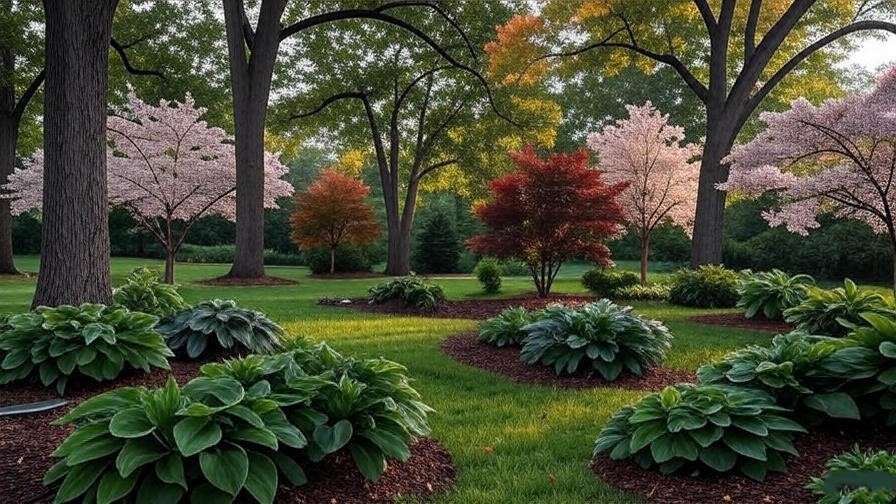Picture this: You step into your backyard, and a breathtaking landscape of trees welcomes you—a serene blend of towering oaks, vibrant maples, and delicate flowering cherries, all thriving in perfect harmony. 🌿 It’s not just a yard; it’s your personal nature retreat. But creating a stunning tree landscape that’s both beautiful and sustainable can feel daunting without the right guidance. As a certified arborist with over 15 years of experience in tree care and landscape design, I’ve helped countless homeowners transform their outdoor spaces into thriving ecosystems. In this comprehensive guide, I’ll share 7 expert tips to design and maintain a tree landscape that boosts your property’s value, enhances your environment, and brings you joy for decades. Let’s dive in and turn your vision into reality! 🌲
Why a Trees Landscape Matters for Your Home 🏡
A well-crafted trees landscape does more than just beautify your property—it’s an investment in your home, health, and planet. Trees are the backbone of any outdoor space, offering aesthetic, environmental, and financial benefits that make them indispensable.
Aesthetic Appeal
Trees bring life to your landscape with their diverse shapes, textures, and colors. Imagine the delicate pink blossoms of a dogwood in spring or the evergreen structure of a pine providing year-round elegance. By carefully selecting trees, you can create a dynamic, seasonal display that keeps your yard visually captivating. For instance, pairing flowering trees like redbuds with evergreens ensures a balanced, eye-catching design.
Environmental Benefits
Trees are nature’s superheroes. They purify the air by absorbing pollutants, produce oxygen, and provide shade that can lower your home’s cooling costs by up to 30% (EPA data). A single mature tree can sequester over 48 pounds of carbon dioxide annually, making your trees landscape a powerful ally in combating climate change. Plus, trees reduce urban heat islands, cooling your neighborhood by up to 9°F.
Property Value Boost
A thoughtfully designed trees landscape can increase your property’s value by 15-20%, according to real estate studies. Buyers are drawn to homes with mature, well-maintained trees that enhance curb appeal and create a sense of established beauty. Whether you’re planning to sell or stay, investing in your trees landscape pays dividends.
Tip 1: Choose the Right Trees for Your Climate and Soil 🌍
The foundation of a thriving trees landscape lies in selecting trees suited to your environment. Mismatched trees struggle to survive, leading to wasted time and money. Here’s how to choose wisely.
Understanding Your Hardiness Zone
Your USDA Hardiness Zone determines which trees will thrive in your climate. For example, maples flourish in cooler zones (3-7), while palms thrive in warmer regions (8-11). Visit the USDA’s website or consult your local extension service to identify your zone. Pro tip: Choose trees rated for your zone or one zone hardier to ensure resilience against unexpected weather.
Assessing Soil Conditions
Soil health is critical for tree growth. Conduct a simple soil test to check pH and drainage—kits are available at garden centers or through your local cooperative extension. For instance, acidic soils (pH 5.5-6.5) suit azaleas and pines, while alkaline soils (pH 7.0-8.0) favor ash trees. Poor drainage? Opt for water-tolerant species like willows. Knowing your soil ensures your trees have the best start.
Native vs. Non-Native Trees
Native trees, like oaks or serviceberries in North America, are adapted to local conditions, requiring less water and maintenance while supporting pollinators like bees and butterflies. Non-native trees, such as ginkgos, can add variety but may demand more care. For a low-maintenance trees landscape, prioritize natives—check with your local nursery for recommendations.
Tip 2: Plan Your Trees Landscape Layout 📏
A stunning trees landscape requires thoughtful planning to balance beauty and functionality. A well-designed layout ensures your trees thrive without overcrowding or clashing with your home’s infrastructure.
Balancing Form and Function
Start by sketching your yard, noting existing features like patios or driveways. Space trees to allow for growth while providing shade and privacy. For example, plant medium-sized trees like crabapples 15-20 feet apart to create a canopy without overcrowding. Consider layering with shrubs and perennials for a cohesive look.
Considering Mature Size
Trees grow—sometimes dramatically. A sapling that looks perfect today could overwhelm your yard in a decade. Research mature sizes (height, canopy width, and root spread) before planting. For instance, a silver maple can reach 80 feet tall with a 50-foot canopy, so avoid planting it near power lines or foundations. Use online tools like the Arbor Day Foundation’s Tree Wizard to check sizes.
Creating Focal Points
Make your trees landscape pop with a specimen tree—a standout like a Japanese maple with its fiery red foliage. Place it in a prominent spot, like the center of your lawn, to draw the eye. Landscape designer Sarah Thompson, with 20 years of experience, suggests layering smaller trees and shrubs around a focal tree to add depth and visual interest.
Tip 3: Master Proper Planting Techniques 🌱
Planting a tree correctly sets the stage for its long-term health. A poorly planted tree may struggle or fail, so follow these expert techniques.
When to Plant
Fall and early spring are ideal for planting, as cooler temperatures and increased rainfall help roots establish. Avoid summer planting, which stresses trees due to heat and drought. Check your local climate—coastal areas may allow year-round planting, while colder regions require precise timing.
Step-by-Step Planting Guide
- Dig the Right Hole: Make it twice as wide as the root ball but no deeper to prevent settling.
- Prepare the Roots: Gently loosen roots to encourage outward growth.
- Place the Tree: Set it so the root flare (where roots meet trunk) is level with the ground.
- Backfill and Water: Fill with native soil, tamp lightly, and water deeply to eliminate air pockets.
- Mulch Properly: Apply a 2-3 inch layer of organic mulch (e.g., wood chips) in a ring, keeping it away from the trunk to avoid rot.
Pro tip: Water slowly with a soaker hose to ensure deep penetration.
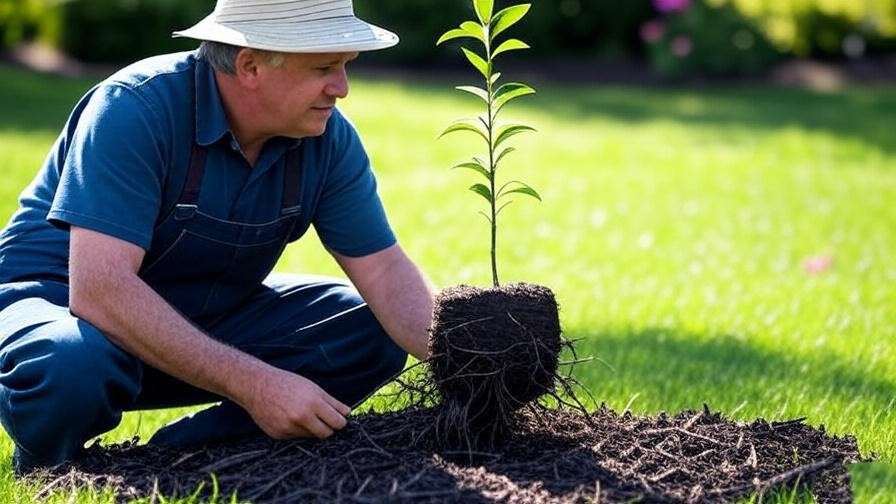
Common Planting Mistakes to Avoid
Avoid these pitfalls:
- Planting too deep, which suffocates roots.
- Wrapping roots tightly in burlap, causing girdling.
- Neglecting to water adequately in the first year.
A client of mine once lost a young maple due to planting it 6 inches too deep—attention to detail matters!
Tip 4: Watering and Mulching for Healthy Trees 💧
Water and mulch are the lifeblood of a thriving trees landscape. Proper care in the early years ensures strong, resilient trees.
Watering Needs by Tree Age
Newly planted trees need consistent moisture—about 10-15 gallons per week for a 1-inch trunk diameter. Use a slow drip or soaker hose to target roots. Established trees require less frequent but deeper watering, especially during droughts. Adjust based on rainfall and soil type—sandy soils need more frequent watering than clay.
Mulching Best Practices
Mulch conserves moisture, regulates soil temperature, and suppresses weeds. Apply a 2-3 inch layer of organic mulch (bark or compost) in a wide ring around the tree, avoiding the “mulch volcano” that traps moisture against the trunk. Refresh mulch annually to maintain benefits.
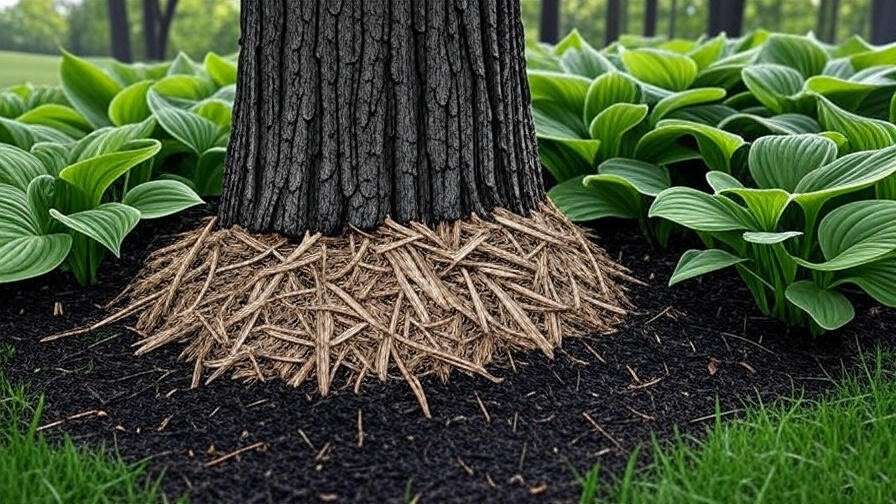
Signs of Over- or Under-Watering
Watch for yellowing leaves (overwatering) or wilting (underwatering). If leaves drop prematurely or bark cracks, check soil moisture with a trowel. Adjust watering based on weather—hot summers demand extra vigilance. An arborist I worked with saved a client’s struggling elm by correcting overwatering, proving the value of observation.
Tip 5: Pruning for Beauty and Longevity ✂️
Pruning shapes your trees, promotes healthy growth, and prevents structural issues. Done right, it enhances your trees landscape for years.
When and Why to Prune
Prune in late winter or early spring when trees are dormant to minimize stress and disease risk. Pruning removes dead or crossing branches, improves airflow, and shapes trees for aesthetic appeal. For flowering trees like cherries, prune after blooming to preserve next year’s buds.
Pruning Techniques for Beginners
Use clean, sharp tools for these basic cuts:
- Thinning: Remove entire branches to improve light penetration.
- Heading Back: Trim branch tips to encourage bushier growth.
Safety tip: Never remove more than 25% of a tree’s canopy in one season to avoid shock. Invest in quality bypass pruners for clean cuts.
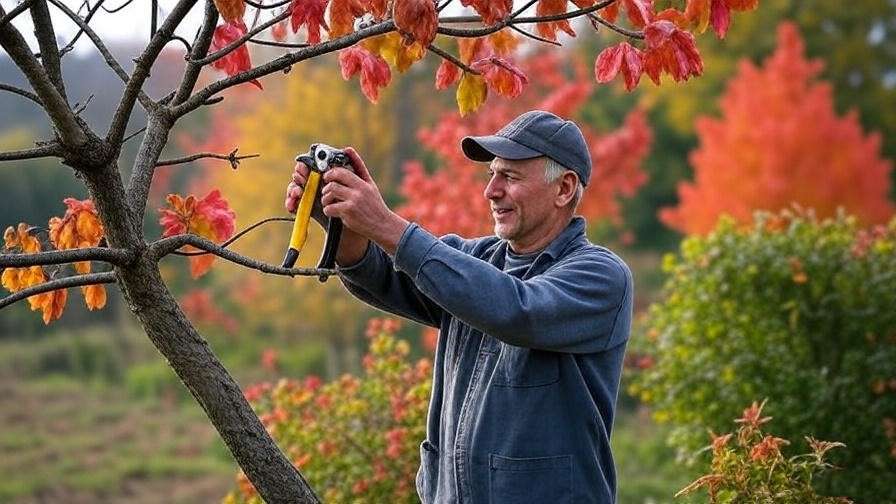
Hiring a Professional vs. DIY
Simple pruning is DIY-friendly, but complex tasks—like removing large branches or shaping mature trees—require a certified arborist. The International Society of Arboriculture (ISA) recommends hiring professionals for trees over 20 feet tall to ensure safety and precision.
Tip 6: Protecting Your Trees from Pests and Diseases 🐛
A healthy trees landscape requires vigilance against pests and diseases that can undermine your hard work. Early detection and prevention are key to keeping your trees thriving.
Common Tree Threats
Pests like the emerald ash borer or diseases like powdery mildew can devastate trees if left unchecked. For example, the emerald ash borer has decimated ash populations across North America, while fungal diseases like root rot thrive in poorly drained soils. Region-specific threats vary—coastal areas may face scale insects, while northern climates deal with spruce budworms. Check with your local extension service for prevalent issues in your area.
Preventative Care Strategies
Regular inspections are your first line of defense. Look for signs like discolored leaves, unusual bark patterns, or small holes in trunks. Organic treatments, such as neem oil for aphids or insecticidal soap for scale, can control minor infestations without harming beneficial insects. Plant pathologist Dr. Emily Carter recommends monthly checks during the growing season to catch problems early. Additionally, maintain tree vigor with proper watering and fertilization to boost natural resistance.
When to Seek Professional Help
If you notice severe symptoms—like sudden leaf drop, extensive dieback, or oozing sap—contact a certified arborist immediately. These could indicate serious issues like verticillium wilt or invasive pest damage. An arborist can diagnose the problem and recommend treatments, such as systemic insecticides or fungicides, that aren’t available to homeowners. Pro tip: Keep a record of symptoms with photos to share with your arborist for faster diagnosis.
Tip 7: Long-Term Maintenance for a Thriving Trees Landscape 🕰️
A stunning trees landscape requires ongoing care to remain vibrant and healthy. Consistent maintenance ensures your trees grow stronger with each season.
Seasonal Care Checklist
Follow this seasonal guide to keep your trees in top shape:
- Spring: Fertilize young trees, inspect for pests, and prune lightly to shape growth.
- Summer: Water deeply during dry spells and monitor for disease symptoms.
- Fall: Rake leaves to prevent fungal buildup and apply mulch to insulate roots.
- Winter: Protect young trees from frost with burlap wraps and check for storm damage.
Download a free seasonal care checklist from our website to stay organized!
Fertilizing Wisely
Fertilizing supports tree growth, but overdoing it can harm roots or promote weak, pest-prone growth. Use a slow-release, balanced fertilizer (e.g., 10-10-10) in spring for young trees. Mature trees often need little to no fertilizer if soil is healthy. For eco-conscious gardeners, organic options like compost or fish emulsion provide nutrients without synthetic chemicals. Test soil every 2-3 years to guide fertilization.
Monitoring Tree Health
Regularly assess your trees for vitality. Healthy trees have vibrant leaves, smooth or textured bark (depending on species), and steady growth. Warning signs include sparse foliage, cracked bark, or leaning trunks. A client’s oak tree I once saved showed early signs of decline—yellowing leaves and stunted growth—but timely soil aeration and adjusted watering restored its health. Use a simple checklist: Check leaf color, branch flexibility, and soil moisture monthly.
Enhancing Your Trees Landscape with Companion Plants 🌸
A trees landscape shines brighter with thoughtfully chosen companion plants that complement your trees and enhance biodiversity. These plants fill gaps, add color, and create a cohesive design.
Consider shade-tolerant perennials like hostas or ferns for areas under large trees like maples. For sunny spots near smaller trees, try lavender or coneflowers to attract pollinators. A mixed planting bed with shrubs like azaleas and groundcovers like creeping thyme can create a layered, vibrant look. For example, a client’s backyard transformed with a redbud tree surrounded by a bed of daylilies and ornamental grasses, creating a stunning focal point.
Here’s a quick list of low-maintenance companion plants:
- Hosta: Thrives in shade, with lush foliage.
- Coneflower: Drought-tolerant and pollinator-friendly.
- Creeping Thyme: Groundcover that suppresses weeds.
- Coral Bells: Adds colorful foliage under trees.
Pair plants with similar water and light needs to simplify care.
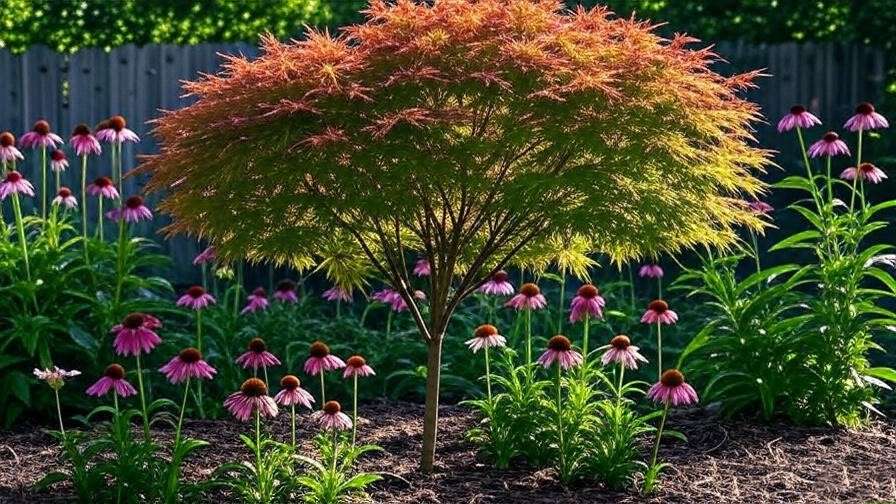
Sustainable Practices for an Eco-Friendly Trees Landscape 🌎
Sustainability is at the heart of a modern trees landscape. Eco-friendly practices not only benefit the environment but also reduce maintenance costs.
Consider rainwater harvesting to irrigate your trees, especially in dry climates. A simple rain barrel can collect hundreds of gallons annually, reducing your water bill. Xeriscaping—using drought-tolerant plants and minimal irrigation—pairs well with trees like pines or junipers. Trees themselves support biodiversity by providing habitats for birds and insects. Environmental scientist Dr. Maria Lopez notes that urban trees can increase local biodiversity by 30%, making your landscape a haven for wildlife.
Mulching with recycled materials, like wood chips from local tree services, further reduces waste. Avoid chemical pesticides in favor of natural alternatives to protect soil health and pollinators. These practices ensure your trees landscape is both beautiful and planet-friendly.
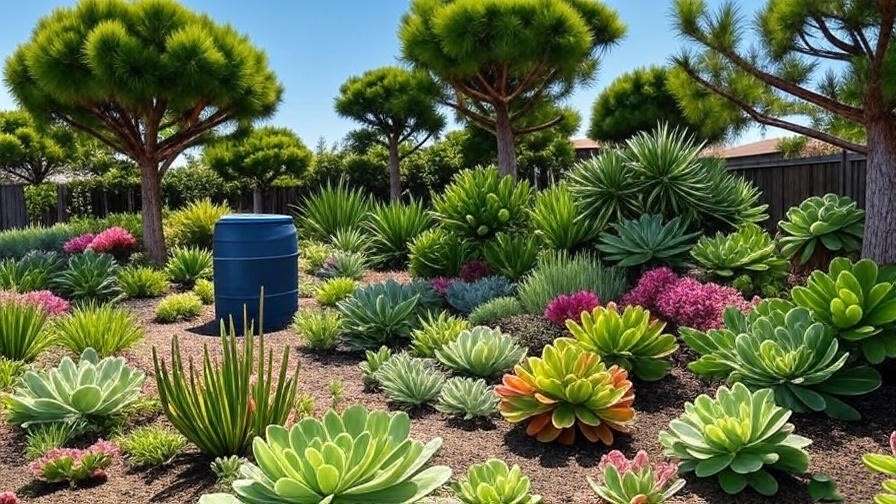
FAQs About Creating a Trees Landscape ❓
How long does it take for a trees landscape to look mature?
Most trees take 5-10 years to reach a semi-mature size, depending on species and growth rate. Fast-growing trees like willows may look established in 3-5 years, while oaks take longer. Regular care accelerates this process.
Can I plant trees near my house without risking damage?
Yes, if you choose trees with non-invasive roots and plant them at least 10-20 feet from foundations, depending on mature size. For example, dogwoods are safe for close planting, unlike willows, which have aggressive roots.
What are the easiest trees to maintain for beginners?
Low-maintenance trees include redbuds, crabapples, and serviceberries. These species are hardy, pest-resistant, and adapt to various soils, making them ideal for novice gardeners.
How do I know if my trees are healthy?
Check for vibrant leaves, steady growth, and intact bark. Wilting, sparse foliage, or discolored bark may indicate stress. Regular inspections and soil testing help catch issues early.
Are there trees that attract fewer pests?
Yes, trees like ginkgos, red maples, and cedars are less prone to pests due to their natural defenses. Consult your local nursery for pest-resistant options in your region.
Conclusion
Creating a stunning trees landscape is within your reach with these 7 expert tips: choosing the right trees, planning a thoughtful layout, mastering planting techniques, watering and mulching effectively, pruning wisely, protecting against pests, and maintaining long-term health. 🌳 By following these steps, you’ll craft an outdoor oasis that boosts your home’s value, supports the environment, and brings daily joy. Start small—plant one or two trees—and build your skills over time. Share your trees landscape journey in the comments below or consult a local arborist for personalized advice. Let’s grow a greener future together! 🌲

